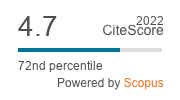Many types of cheese are an excellent substrate for mould growth. Important fungi growing on cheese include Penicillium, Aspergillus, Cladosporium, Geotrichum, Mucor and Trichoderma. Incidence of moulds in cheese indicates that the predominant flora belong to the genus Penicillium. Some types of cheese such as Camembert and Roquefort cheese intentionally contain moulds. In the production of these kinds of cheeses, starter fungal cultures that have low toxigenic capacity should be selected and spontaneously moulded cheeses should not be consumed to avoid mycotoxin risk. Mycotoxins produced by certain moulds as a toxic metabolic substances can be found in dairy products from two origins: (1) indirect contamination, which results when dairy cows ingest feed that contains mycotoxins that pass into the milk such as aflatoxin M1, and (2) direct contamination, which occurs because of the intentional or accidental growth of moulds. The most common mycotoxins which are stable in cheese are citrinin, penitrem A, roquefortine C, sterigmatocystin and aflatoxin. On the other hand patulin, penicillic acid and PR toxin do not persist in cheese. The significance of patulin, penicillic acid, and mycophenolic acid in cheese in small amounts is probably not great from a public health standpoint because of their low oral toxicity while sterigmatocystin is of more concern because of its carcinogenicity. Mycotoxins may cause fatal poisoning and toxic effects called acute and chronic mycotoxicoses. Several human and animal intoxications by mycotoxins have been reported such as 'turkey's X disease', alimentary toxic aleukia and yellow rain. Mycotoxin production in foods can be affected by temperature, food substrate, strain of mould and other environmental factors. There are physical, chemical and biological methods to prevent the growth of fungi, eliminate or reduce the toxin levels, degrade or detoxify the toxins in foods and feeds. However, the best way for avoiding mycotoxins in dairy products is to prevent mould contamination since there are limitations of degradation or detoxifications.
Mycotoxins and mould contamination in cheese: a review
I. Sengun Related information
1 Engineering Faculty, Food Engineering Department, Ege University, 35100 Bornova-Izmir, Turkey
, D. Yaman Related information1 Engineering Faculty, Food Engineering Department, Ege University, 35100 Bornova-Izmir, Turkey
, S. Gonul Related information1 Engineering Faculty, Food Engineering Department, Ege University, 35100 Bornova-Izmir, Turkey
World Mycotoxin Journal: 1
(3)- Pages: 291 - 298

Published Online: August 18, 2008
Abstract
Keywords: cheese, moulds, mycotoxin prevention
2023 Journal Impact Factor
2.0
source: Journal Impact Factor 2023™ from Clarivate™

Institutional Offers
For institutional orders, please contact [email protected].
Purchase Options
-
P. Battilani and M. Camardo Leggieri
-
F. Xu, R.C. Baker, T.B. Whitaker, H. Luo, Y. Zhao, A. Stevenson, C.J. Boesch and G. Zhang
-
A.O. Aasa, F.F. Fru, O.A. Adelusi, S.A. Oyeyinka and P.B. Njobeh
-
R. Barkai-Golan and N. Paster
-
F. Wu
-
V. Ostry
-
R. Bandyopadhyay, A. Ortega-Beltran, A. Akande, C. Mutegi, J. Atehnkeng, L. Kaptoge, A.L. Senghor, B.N. Adhikari and P.J. Cotty
-
A. Logrieco, A. Moretti and M. Solfrizzo
-
G. Schatzmayr and E. Streit
-
B. Grenier and I. Oswald



